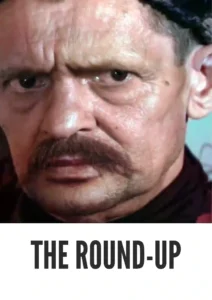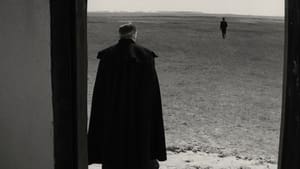Video Sources 0 Views

Synopsis

Immerse yourself in the chilling world of The Round-Up, a powerful Hungarian historical drama from 1966, now vividly colorized to amplify its stark portrayal of tyranny and resistance. Directed by Miklós Jancsó, this internationally acclaimed film explores the brutal aftermath of the 1848 Hungarian Revolution, offering a haunting meditation on power, betrayal, and the resilience of the human spirit. Perfect for discerning cinephiles and those drawn to thought-provoking historical narratives, this HD download presents a visually arresting and emotionally resonant cinematic experience.
The Round-Up unfolds in 1860s Hungary, where the failed revolution against Habsburg rule has left the nation scarred and simmering with discontent. Suspected supporters of the revolution are rounded up and imprisoned in a desolate camp, their fate hanging precariously in the balance. The Austrian authorities, desperate to crush any lingering resistance, employ a ruthless campaign of psychological and physical torture to identify members of the outlaw Sándor Rózsa’s guerrilla band, believed to be the last vestiges of Kossuth’s movement.
Amidst the squalor and despair of the prison camp, a complex web of intrigue and betrayal unfolds. János Gajdar, a captured guerrilla, is coerced into becoming an informant, forced to choose between his own survival and the lives of his comrades. As Gajdar navigates this treacherous landscape, he becomes increasingly ostracized by his fellow prisoners, his actions fueling suspicion and resentment.
The film culminates in a devastating climax, as the authorities, through cunning manipulation, trick the remaining guerrillas into revealing themselves, shattering any hope of freedom. The Round-Up is a harrowing exploration of the human cost of political repression, its stark imagery and unflinching narrative leaving a lasting impact.
The film features a compelling cast of actors who bring the story’s complex characters to life:
-
János Görbe as János Gajdar
-
Zoltán Latinovits as Imre Veszelka
-
Tibor Molnár as Kabai
-
Gábor Agárdi as Torma
-
András Kozák as Ifj. Kabai
The Round-Up is a historical drama that delves into themes of political oppression, resistance, and betrayal. Its stark and unflinching portrayal of violence and manipulation firmly places it within the realm of serious and thought-provoking cinema.
Released in 1966, The Round-Up is considered a seminal work in Hungarian cinema, marking a breakthrough for director Miklós Jancsó and establishing his signature style. The film is often interpreted as an allegory for the 1956 Hungarian Revolution, subtly critiquing the oppressive tactics of authoritarian regimes. Despite facing censorship and political scrutiny, The Round-Up resonated with audiences both in Hungary and abroad, solidifying its place as a classic of world cinema.
This colorized version of The Round-Up has been meticulously restored using advanced digital technology, enriching the visual experience while preserving the film’s original atmosphere and artistic integrity. The colorization process involved a careful analysis of the black and white footage, with painstaking attention to detail in selecting appropriate colors for each scene. This transformative process adds a new layer of depth and nuance to the film, enhancing its emotional impact and making it even more accessible to contemporary audiences.
-
: Miklós Jancsó
-
: Gyula Hernádi
-
: Tamás Somló
-
: Mafilm
-
: 95 minutes
-
: MP4
-
: HD (1080p)
-
: Compatible with most devices, including smartphones, tablets, computers, and smart TVs.
The Round-Up (1966) has been widely praised for its artistic merit, its powerful narrative, and its unflinching exploration of political oppression. It is considered a masterpiece of Hungarian cinema and a landmark achievement in the career of Miklós Jancsó. The film’s enduring themes and its innovative visual style continue to captivate and challenge audiences around the world.
-
: What is The Round-Up about?
-
A: The Round-Up is a historical drama set in 1860s Hungary, exploring the aftermath of the failed revolution against Habsburg rule and the brutal suppression of suspected revolutionaries.
-
-
: Is The Round-Up (1966) a well-known film?
-
A: The Round-Up is a highly acclaimed film, considered a classic of Hungarian cinema and a significant work in world cinema.
-
-
: Is this version of The Round-Up colorized?
-
A: Yes, this version has been professionally colorized to enhance the viewing experience.
-
-
: What makes The Round-Up interesting for classic film fans?
-
A: The Round-Up offers a powerful and thought-provoking exploration of political oppression, showcasing the unique artistic vision of director Miklós Jancsó.
-
-
: What is the download format?
-
A: The download format is MP4, which is compatible with most devices.
-
-
: What resolution is the download?
-
A: The resolution is HD (1080p), providing a high-quality viewing experience.
-
Watch The Round-Up Today!












